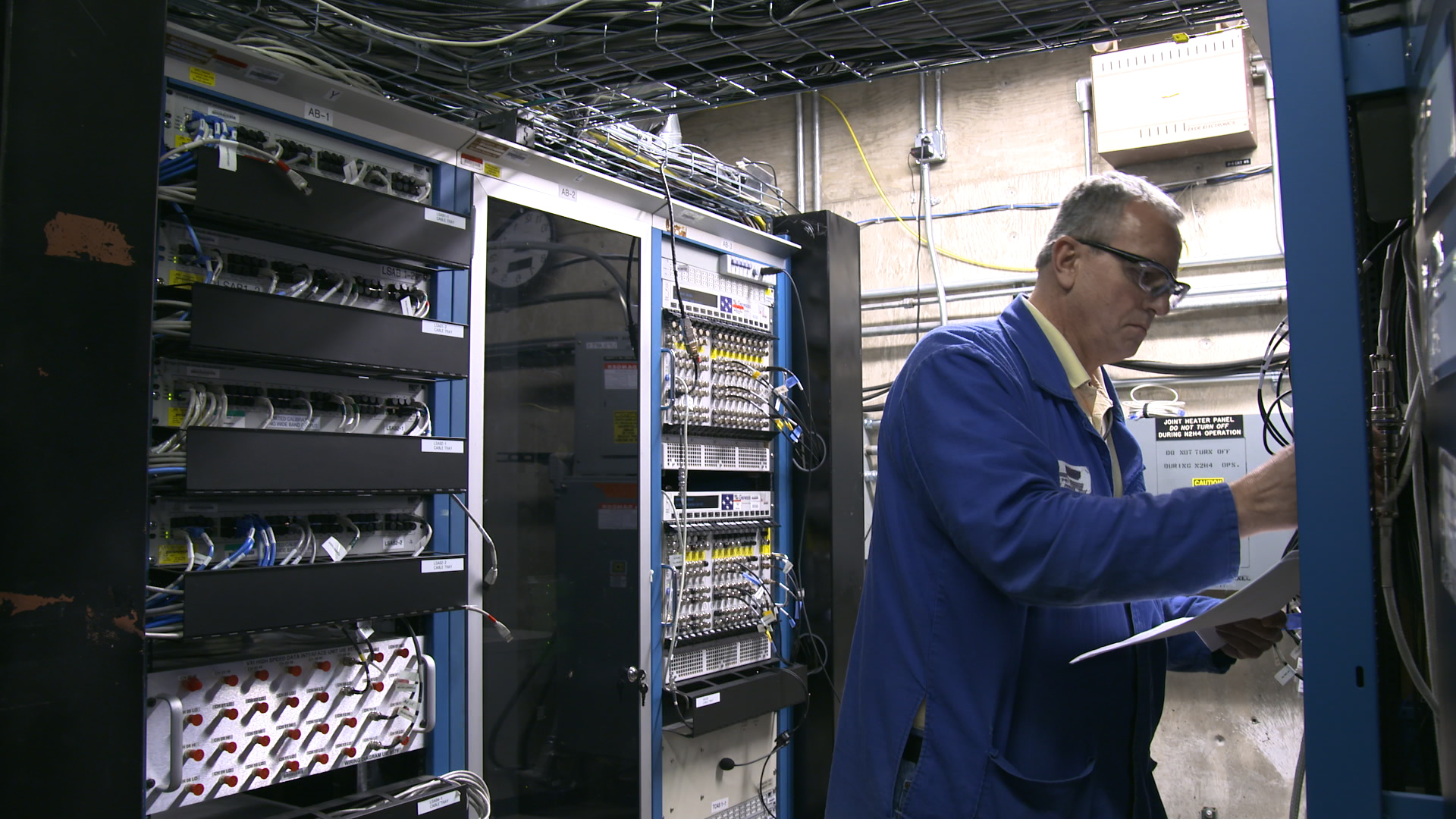A pretty strand of lights can quickly turn into a pain when one electrical short takes the twinkle out of the whole brigade. An arduous process begins of checking each bulb to figure out which one may be the blackout mea culpa.
NASA and Orbital ATK engineers have a similar task when preparing the solid rocket booster avionics for the agency’s new rocket, the Space Launch System (SLS). However, its “strand” isn’t an average 100 parts to test. It’s millions.
When completed, two five-segment boosters and four RS-25 engines will power SLS to orbit and enable astronauts to explore destinations in deep space, including an asteroid and Mars.
The avionics system is responsible for igniting, steering and jettison of the solid rocket boosters for SLS. The boosters used during the first two launches of SLS will be the world’s largest at 177 feet long and 12 feet in diameter.
A flight-like set of the avionics system will be part of the major qualification test coming up for the booster March 11 at Orbital ATK’s test facilities in Promontory, Utah. This is the first time in the history of the space program that a flight-like avionics system will be integrated into a booster firing. Doing so will further validate the design and test the system performance in the conditions the boosters will experience on the pad and during flight.
“It’s great because not only have we been able to integrate the booster, but we’ve worked with teams all over the country to develop this system,” said Jennifer Graham, Orbital ATK systems integration test engineer. “We look forward to seeing the test fire and getting these boosters ready for flight.”
The booster avionics system — including hardware, software and ground test systems – was shipped from Orbital ATK’s Avionics Lab in Clearfield, Utah, and delivered in early February to the SLS System Integration Laboratory at NASA’s Marshall Space Flight Center in Huntsville, Alabama, where the SLS program is managed for the agency. Development testing at Marshall will continue through the end of the year.
“We are designing a system for a human-rated vehicle that has to be at a minimum single-fault tolerant, which means no one failure on a critical system can result in a big problem for the mission,” said Eric Corder, avionics system manager for the SLS Booster Element at Marshall. “We don’t want the rocket to just operate the way it’s supposed to. Our team intentionally implements failure scenarios to the electronics to make sure, for example, a shorted circuit or faulty box doesn’t compromise mission success. That’s even an issue that may have a one-in-10,000 chance of occurring.”
At the Marshall lab, the avionics are being integrated in a complete, forward skirt ring for continued testing, which has been ongoing for three years at Orbital ATK. The forward skirt houses booster avionics that work with the SLS avionics to monitor booster conditions and steer the motor nozzles.
“We’re going through millions of possible failure scenarios all the way down to the individual circuits within the boxes,” Corder added. “It’s not easy to do. We may think we have everything right in the design, and then a failure occurs during testing that we weren’t expecting at all. We have to go back and figure those things out. That’s why it takes so long to develop and test a human-rated avionics system.”
That testing will be done during two-minute flight simulations, with a booster test set mimicking the SLS flight computer. The avionics also will be connected for testing to the thrust vector control actuators and systems — electromechanical or electrohydraulic mechanisms that direct the vehicle’s propulsion system, guiding the vehicle during flight.
“We are really starting to look through the microscope, so to speak, at the parts that make up this system to ensure they function properly,” said Graham.
The booster avionics system was designed by NASA, Orbital ATK and L-3 Cincinnati Electronics of Mason, Ohio.
The first flight test of the SLS will feature a configuration for a 70-metric-ton (77-ton) lift capacity and carry an uncrewed Orion spacecraft beyond low-Earth orbit to test the performance of the integrated system. As the SLS evolves, it will provide an unprecedented lift capability of 130 metric tons (143 tons) to enable missions even farther into our solar system.
For more information on SLS, visit:




























